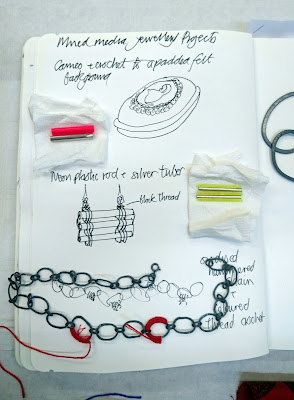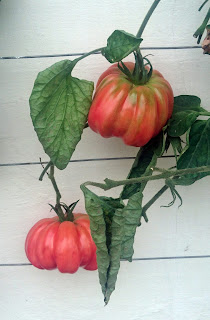I have some new works in two exhibitions starting today at Mobilia Gallery in Cambridge - USA. Very aptly two pieces celebrate the midsummer solstice!
Midsommarstång & Små grodorna are both made with vintage Swedish flax yarns from the 1960, which were stored in a haberdashery stockroom for decades. They were made especially for the *Intoxicating textiles* exhibition.

"Midsommarstång"
"Linladan is Swedish for flax barn: the threads we have on this website is from flax grown and spun in the heart of Sweden's textile industrial area in the 1960's. As the factory closed down, the remaining yarn was hidden away in a haberdashery stockroom for decades.
We're still researching the story of this yarn, hoping to write it here and on the blog as it unfolds. Although we will add threads from other parts of the world when stumble upon some, the purpose of this website is to present the Swedish yarn Linblomman (The Flax Flower)."
"An old Scandinavian proverb tells "Ull blir mull och lin blir gull",
(Wool becomes dust, flax becomes gold) and we have found the latter to be true: linen stays beautiful and strong, ready for stitching now or in 50 years."
"Små grodorna", referes to a special song that is sung when dancing around the maypole at midsummer in Sweden. The translation of Små grodorna means the Swedish for "The Little Frogs" The song is to be danced to while making movements to signify different parts of the frog. It can also be sung at Christmas too, around the Christmas tree. My neckpiece is a celebratory adornment for midsummer to be worn when dancing The Little Frog dance. It can be seen as necklace of bubbling frog eggs to represent the starting of life and to celebrate the beginning of summer.

"Små grodorna"
If you fancied hearing the song and maybe joining in! You can follow the link to see You Tube Video



Små grodorna details
Midsommarstång neckpiece, is a nod to the maypole which is traditionally used at midsummer in Sweden and some parts of Finland. Again it is a piece of adornment to wear in celebration of life, which can be for special celebration days or could just be worn every day to remind us to enjoy and be happy for the good things we have. The small triangular forms represent flags or bunting used across Europe to celebrate traditional gatherings.



"Midsommarstång" details
The two Shepherdess Neckpieces were made especially for the *Black and White* exhibition, in which we were asked to make panda inspired works, either a literal panda or through the theme of black and white. I based my neckpieces on the folklore of the panda and how they came to have their black and white fur.
In Tibetan folklore there is a story about how the panda came to have it’s distinctive black and white colourings. It is said that a long time ago, all giant pandas were snowy white. One day a stalking leopard attacked a panda cub. A shepherdess came to his rescue, but in doing do she was killed by the leopard. The bears in mourning for the shepherdess wore black armbands as a sign of respect at her funeral. The pandas began to cry and as they did they began to wipe their eyes with their armbands, covered their ears to muffle the sounds of crying and hugged one another. The armbands blackened their fur and that is how the panda became black and white.



"Shepherdess Neckpiece #1"
My two neck-pieces are made in honor of the folklore surrounding the shepherdess, who bravely protected the panda cub.



"Shepherdess Neckpiece #2"
The exhibitions run from the 21st June – 15th August 2016


Promotional images from Mobilia Gallery


























































